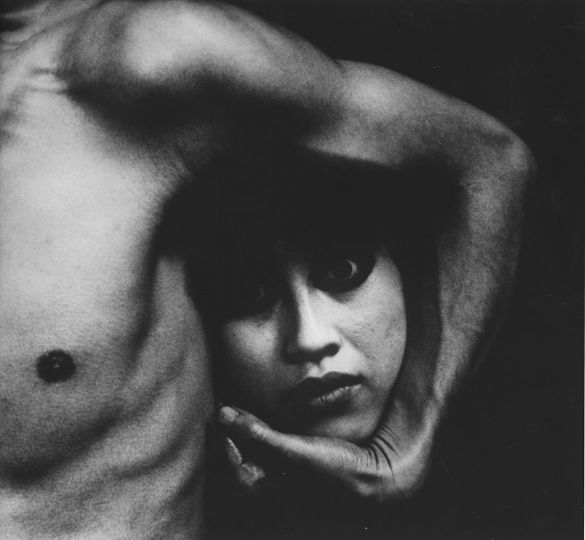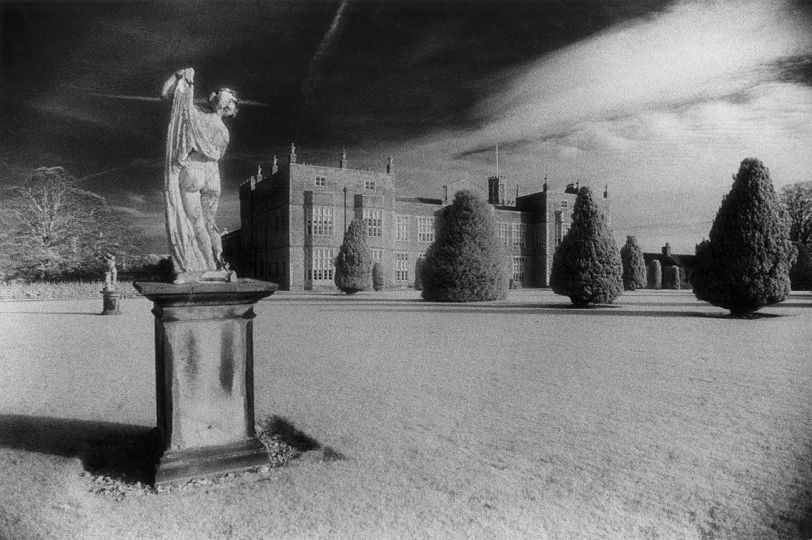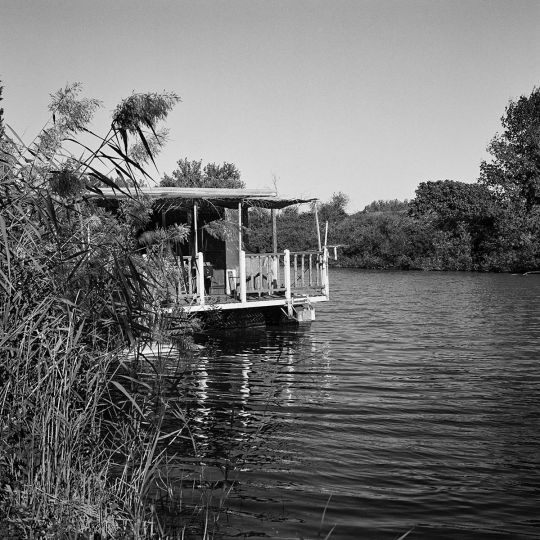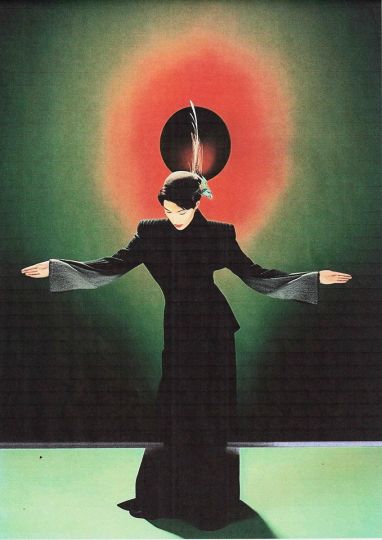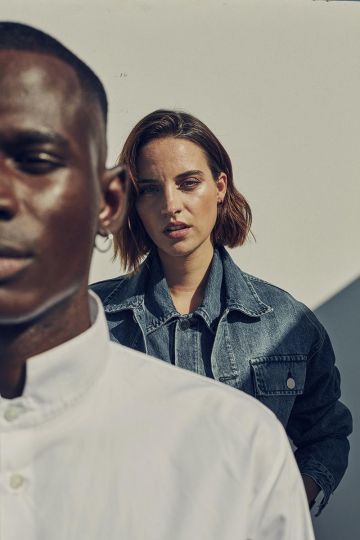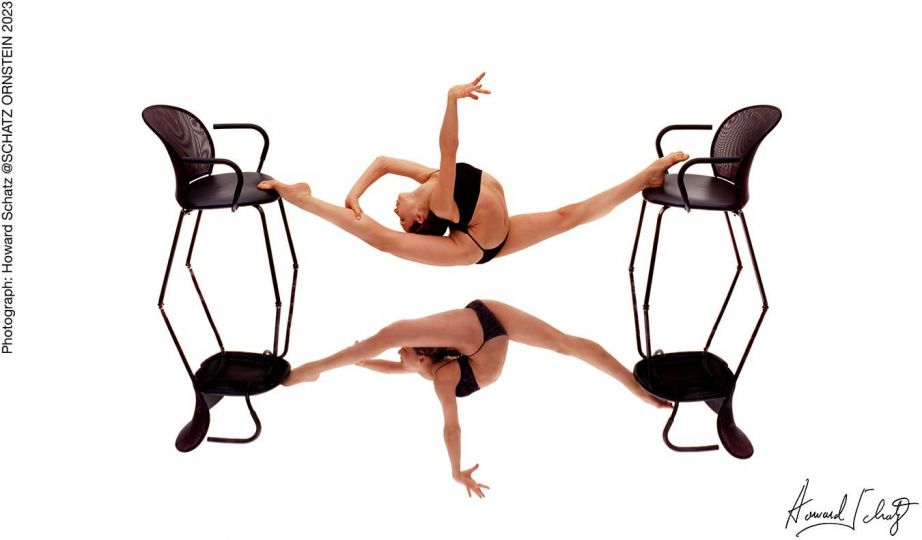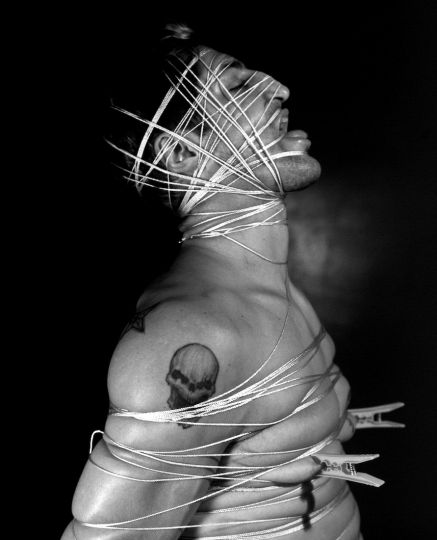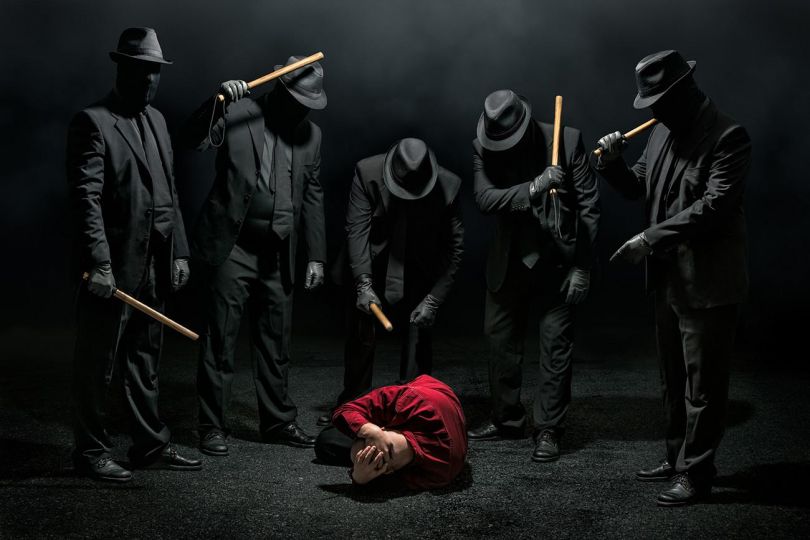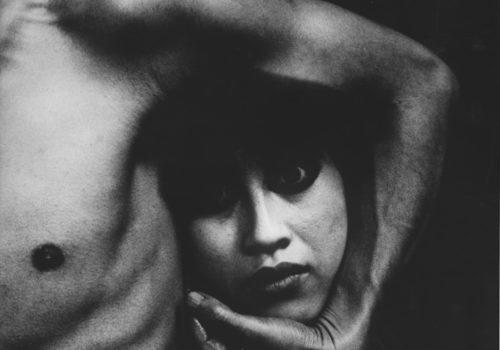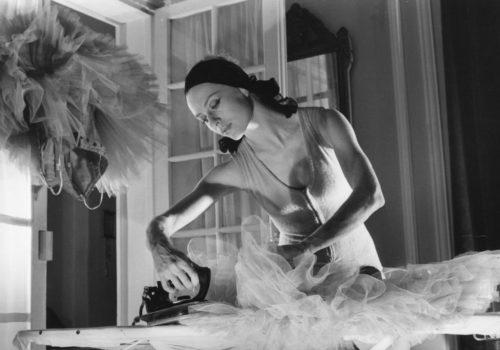Jim McHugh is an American photographer. Living in Los Angeles his work is extensively centered on the culture of celebrity. The long–term relationship with the British-born and Los Angeles based artist, David Hockney began over forty years ago. In that first meeting and photography session, the most famous portrait of David was created. This is the cover of Hockney’s autobiographical book, The Way I See It.
McHugh’s portraiture of artists continued over a decade, including John Baldessari, Ed Moses and Edward Ruscha to name a few. The result was several book publications: The Art of Light and Space by Abbeville Press, and California Painters: New Work by Chronicle Press.
McHugh attended the master’s program at the UCLA Film School. His extensive editorial work, produced hundreds of covers and thousands of stories traveling the world, began as an original contributing photographer for People magazine (for twenty-five years), and Architectural Digest, as well as being the official photographer for the Grammy Awards.
He is renowned for his large format Polaroid images of Los Angeles, urban landscapes monumentalizing that which is now invisible and derelict. These pictures were first exhibited at Timothy Yarger Fine Art in 2010 in a show titled “Let’s Get Lost: Polaroids From The Coast.” His solo exhibitions include, The Santa Monica Museum of Art and the James Corcoran Gallery in Los Angeles.
His work is held in collections of the Museum of Modern Art, The Walker Art Center, The Polaroid Collection and the National Portrait Gallery in London. McHugh’s awards both national and international include; The United Nations IPC Professional Photography Leadership Award, The George Eastman House Best of Show for Architectural photography of Los Angeles.
http://www.jimmchughphotographs.com
Close Up By Patricia Lanza – Featuring Jim McHugh On Photographing David Hockney
Q: How did you first meet and where, what are the years you photographed him?
McHugh : As a little background, I’ve worked for magazines predominately, as well as advertising, a number of books and other special projects. I was on the masthead of both People Weekly and Architectural Digest for over 25 years, so my photo vocabulary is pretty wide. One of the many reasons I admire my friend Douglas Kirkland is his legacy from that earlier magazine culture, where you may have a specialty, like celebrities, but are routinely asked to shoot just about anything or anybody, often under very challenging conditions and bring it home, photographed beautifully. In the beginning People magazine was like that, we photographed everything from celebrities to Aids doctors and the epidemic. Architectural Digest is, of course, the highest quality of interiors and architecture; my specialties were arts and antiques, designers, architects and celebrity covers. I’ve traveled all over the world for both magazines, everywhere from Italy and France to Japan and China as well as places like Jackson Hole, Wyoming and the Bering Sea, both Russian and American sides.
I began photographing artists early 1980s as a personal project to counterpoint commercial work. Assignments, by their nature, have so many other voices weighing in, I wanted to have a project of my own. Like many photographers, I started shooting when I was about 10 years old. At about 13 or 14 there was a touring Yousuf Karsh exhibit which to this day remains a one of those lifetime experiences. Unforgettable seeing a gallery full of those large, commanding images of Hemmingway, Churchill and Pablo Casals. Since then I’ve always been influenced by those photographers like Karsh, especially Arnold Newman and of course,, for artists portraits. One day I saw a used Sinar 4×5 camera in a store window and bought it, I have been stuck on large format cameras ever since. That’s how it started; I wanted to shoot a series of portraits with a 4×5 camera as a project on my own. I called up the one artist I knew, ceramist Beatrice Wood, who lived in Ojai, where I’d gone to school, and asked to take her picture. Beato, as she was called by friends, was 95 at the time; she said yes. Off we went.
A list of artists to photograph accumulated from the recommendations of the artists I photographed as well as gallery owners and collectors I knew. The artist Billy Al Bengston was a tremendous supporter after photographing Billy in his studio for Architectural Digest. The collector Joan Quinn, with crazy multi–colored hair, exotic jewelry and the wildest art collection I had ever seen was the key in a lock to many great artists and their studios. I was so naive to it all, I knew absolutely nothing about the art world. I still have the reporter’s notebook lists, scratched out in pencil, phone numbers with names like Richard Diebenkorn spelled wrong, that sort of thing. In a way it made it easier, if I had actually known how famous these artists were I might never have called. Sam Francis, Ed Ruscha, Lita Albuqueque, Bob Irwin, Mike Kelley etc.
I first met David Hockney in 1984. The portrait that came out of the session that day has now been published many times, “David in His Studio, Los Angeles – 1984” and best of all we have remained friends ever since. This is how we met.
Don Bacardy is one of the world’s most celebrated portrait painters, particularly known for his paintings of artists. One afternoon, when thankfully it was going very well photographing Don in his Santa Monica Canyon studio. I casually mentioned in conversation that I hoped to photograph David Hockney. “Oh, David,” said Don “we’re such good friends. I’ll call David right away to make an introduction, you definitely must photograph him!” I agreed completely. True to his word, a day later, Don’s on the phone, “Spoke to David, he’s expecting to hear from you, oh, and he said you can take his picture, and on pain of death don’t give this number out to anyone!” And click, Don was off the line. That was a “Big Day in Blackrock’ for this young photographer.
One of the things I have learned about David over the years is that if you ask him for something you had better be ready for him to say yes and want to do it immediately. For one, when I called that morning, I wasn’t expecting him to answer his own phone, two, he said yes, and three, most unexpectedly, how about today? Would I photograph him today? I photograph my artist portraits with a large 4×5 view camera, the type where the photographer puts a dark cloth over his head and focuses an upside down, backwards image on a dim ground glass. I also light with strobe lights all of which requires lots of equipment and an assistant to help with it all. Since none of this had been organized that morning, I explained to David that I was not prepared to photograph him today, but could I get organized and call him back to arrange another time? He agreed. I said thank you hung up the phone.
Immediately I was overcome with regret. “Are you crazy?” One of the most renown, collected artists in the world, the one you follow avidly, happily agreed to let you photograph him today and your answer was, “I’ll get back to you?” What hand has ever moved quicker? I instantly reached for the phone; when David answered I said “Mr. Hockney, if it’s still alright with you, I’m on my way, thank you!” Within a few phone calls I found an assistant, my jitters settled down, the equipment was loaded, and I was on my way up the hill. That was the beginning of 4 decades of friendship.
Q: Tell your favorite story about David Hockney?
McHugh : So many; They were having a show of his fax drawings at a museum in Brazil. Some of the drawing were quite large and were sent as a grid, multi pieces to make the one drawing. Some drawings were smaller single sheets. It was a huge, very successful show. When it came to the end of the exhibition and it was time to take down the show the curator called to ask David how he would like all the drawings sent back to LA. David, with great humor replied, “Fax them back!” He’s was very quick to foresee how digital imaging would change everything. Of course, the drawings couldn’t really be returned by faxing, they would only endlessly duplicate themselves.
There’s a wonderful story about David and his Malibu beach house. He wanted a beach house, a place to get away. So, after much looking, he found this very charming 1930s postcard of a cottage directly on the beach in Malibu. He wouldn’t change a thing. Very little remodeling was done; to the contrary; he kept the original room colors, often the original paint; as well as the old wooden paneling and bookshelves and duplicated many elements that over time needed replacing. David is most comfortable in warm, cozy environments, lots of patina.. This was a true Malibu beach cottage, a Golden Era hide-away.
I should add, at that same moment in time many of these vintage little beach houses were disappearing, torn down, replaced by massive Crocket and Tubbs, multi-storied Miami Vice style glass and steel “architecturally significant” beach palaces. David’s charming little beach house was out of step with the new wave in Malibu.
Just as he was moving in, David selected a few of his painting to decorate the walls, “Oh no no, David, that’s a terrible idea,” friends warned, “you can’t put your valuable art works up in the little cottage, there’s not enough security, and besides, the doors and windows are way too flimsy, surely someone will break in and steal everything!” David nodded in agreement. “Alright, I see what you mean,” And in true DH fashion, he began painting all new paintings directly on the walls, later adding beautiful museum frames to hang over them. “No one can take these!” he said, he then painted colorful little flowers to the walls, making his own wallpaper.
Q: Did you use many different formats for the Hockney series both digital and film, also any Polaroid?
McHugh : Everything 35, 2 ¼, 4×5, Polaroid, Digital, iPhone –
Q : Your work includes photographing famous artists–– how was photographing Hockney? What was the process?
McHugh : Photographing David is always, very different. If you are doing an actual set up, for a cover or something, that’s one type of work. If you are capturing action, David working, that’s a whole other thing. When he painted the swimming pool for an Aids auction benefit in 1993, I photographed him doing it, covering all the steps of his process, trying very hard not distract the artist. So, for a photographer, something like that, when it’s done, it’s done. There’s a start and a finish.
A moment on the swimming pools – Seeing one of the swimming pools painted firsthand was an enormous art education. Because the pools were so beautiful and sparkling and in magazines, I never gave them much thought about how they were made or that they were even paintings, like a painting in a studio. They were Hockney pools, light moments, frothy, sunshine, California, part of the bigger Hockney culture. For me, being present as the master artist painted one of his famed swimming pools was a thunderous awakening to art, period; it’s done all freehand, the picture already locked in his head, he begins, by himself, standing in the pool, as he goes, every single semi-circle is perfectly painted, they are also perfectly spaced, one from the other, subtly shrinking slightly smaller as they near the deep end of the pool. No erasure on that pencil, all finished in a few hours. Note to self, “give that a whack at home, strap a paint brush on the end of a long broom stick, grab a gallon of paint and see how it goes.” Rusty Powell, once the director of LACMA, said to me very sage like when he heard what I was doing, “Spending the day with a painter like David Hockney ain’t just nothin!” That’s the truth, photography aside, it’s what I’ve learned just being there.
Bill Epridge, the great Life Magazine photographer told me one time when I was just starting, “We are like Civil War surgeons, an important part of our skill is operating quickly.” That’s always been good advice.
Q : Hockney, being British, is also a resident of Los Angeles, and calls himself the “English Angeleno.” How did living in California influenced his work?
McHugh : I’m not an art historian or have any real curatorial experience, so I wouldn’t want to weigh in on how California or LA has influenced David’s work. Such a good question, of which books are written. Maybe another equally important question is about the immense influence the art of David Hockney has had on how people around the world see Los Angeles.
There’s a great quote by Carey McWilliams from “Southern California: An Island on the Land”, Southern California is a “great tribal burial ground for antique customs.”
David came here when he was very young, in his twenties, he is the first to say, attracted to LA, like so many, the artistic freedom, the sexual freedom, the space and of course the sunshine. He told me it was like a dream here, he was able to get a very nice studio pretty cheap, and he immediately bought a car, a 1960 light blue Ford Falcon. David’s first studio was on Pico Blvd. near the Crenshaw district. There were a number of artists in that same building including my friend Ron Davis. From what I’ve been told, it was a very small, closely knit community at that time. And David loves driving; he is famous for his road trips with friends, across Europe, Egypt, America, the ability to drive everywhere in LA was thrilling to him. I remember David saying one time about his early days in LA, that he had a studio, a car and an art collector had recently purchased one of his paintings for the tremendous sum of $2500! What more could there be? He said he thought, “I can live here forever.”
Q: What influence has David had on your work?
McHugh : Let me add, David is by nature, very bold. He looks so colorfully casual, but honestly, he’s quite fearless and determined. When he has an idea, or a project, he goes, commits himself 100 percent to it. We came back from his massive photography exhibit in Colon one time, most people, artists included, would take a well–earned rest. Two days later he was headed off to Arizona to paint the Grand Canyon, in a hugely ambitious manner, a multi panel walkable 20 ft. painting employing all his years of contemplating multi point perspective. He had photographed the Grand Canyon like that, which was exhibited in Colon, and now, before anything got away, he would paint it. When I see that I’m moved by it, that’s the real deal.
I should point out that it takes a certain nerve for a kid from Bradford, from Yorkshire, to get on a plane and come to Los Angeles to start his life as an artist. Certainly not the trajectory advised by London art schools; LA was hardly an art capital at that time. It had to take courage, David would never say anything like that, he’s much too modest, but it was plenty adventurous. Of course, the Cool School was here and had received considerable attention, and the Light and Space movement, Bob Irwin, Larry Bell. And certainly, David Hockney was well aware of all that. He was a young artist from another country, who came here and added so much to making Los Angeles the art capital that it has become.
It’s interesting to consider that there are two painters who have contributed so much, perhaps most, to the world’s idea of Los Angeles are David Hockney and Ed Ruscha, and neither artist is from here; both arrived in Los Angeles at almost the same time, in the early 1960s, and their studios here were barely a mile apart.
Q: What have you learned in the course of photographing famous artists and their creative process?
McHugh : Interesting question, because I come from an editorial background, which is about telling a story. What you are doing is always about somebody else, something else. In the editorial world, the magazine world there is the pressure to “Get It.” To return home from the assignment with great photographs, usually with strict time limits, both from the publication and the subject you’re shooting. So, for me, meeting these artists was something I had encountered before, they did what they wanted to do. They followed these strange lines of thought
Going into David’s studio was like magic; Most people, on their first visit are completely overwhelmed by it. paintings everywhere, he often works on several things at the same time, there are drawings clipped to easels and miniature foam core models of up– coming shows spread out on tables with tiny cut out paintings on the walls, newspaper clippings are stuck to the walls. Where am I? The first time we met David talked to me about Cubism, how we see from so many different perspective points when we are looking, how cameras and the renaissance one–point perspective is a very limited view. I was mystified.
Lita Albuquerque’s studio was filled with huge, beautiful paintings, her 6 month–old baby was in the studio with her, resting in one of those little baby buckets, while Lita painted away. She spoke about the Sun and the Moon, the surface of the earth. I thought, OK. Robert Irwin had just won the prestigious MacArthur Award, the genius award, in that very moment he was one of the most revered artists on the planet, yet he lived in a very modest little apartment in Westwood Village without a single piece of art in it. Like a Zen Master he imparted this wisdom to me, “Sometimes, when you’re getting too much attention, you need to disappear for a while, get in the wind.” Gong! All I could think of was, who are these people? I grew up in a very creative world, but I’d never spent time with artists like this before. For me, to this day, it’s a privilege to be invited to an artist’s studio to view their work. They may own their own island or work away in their mom’s garage, I remember sculptor Robert Graham’s advice to me on my first of many visits to his Venice workspace, “Having someone in your studio is like having someone in your underwear drawer.” Passing over every studio threshold, that little koan rings in my head.
Q : Discuss Hockney’s creative process, has this influenced your own work?
McHugh : David has been one of the greatest inspirations of my life. Not taking credit for the words, but many years ago he shared this great quote “Inspiration, She does not visit the lazy.”
Q : When was the last photographic session with David and what was the context? Was he working on his art?
McHugh : In 2019 he was creating one of the large 3D and was photographing Stephanie Baron the chief curator from LACMA to be added to the larger photograph. Shot at the studio in the Hollywood Hills. I had also photographed the large luncheon who were sitters at LACMA for his 82 Portraits and One Still Life in 2018. He also painted another swimming pool at his house when he was 80, but I’m not sure he wants that out yet. I’ll look thru what can be released.
http://www.jimmchughphotographs.com


